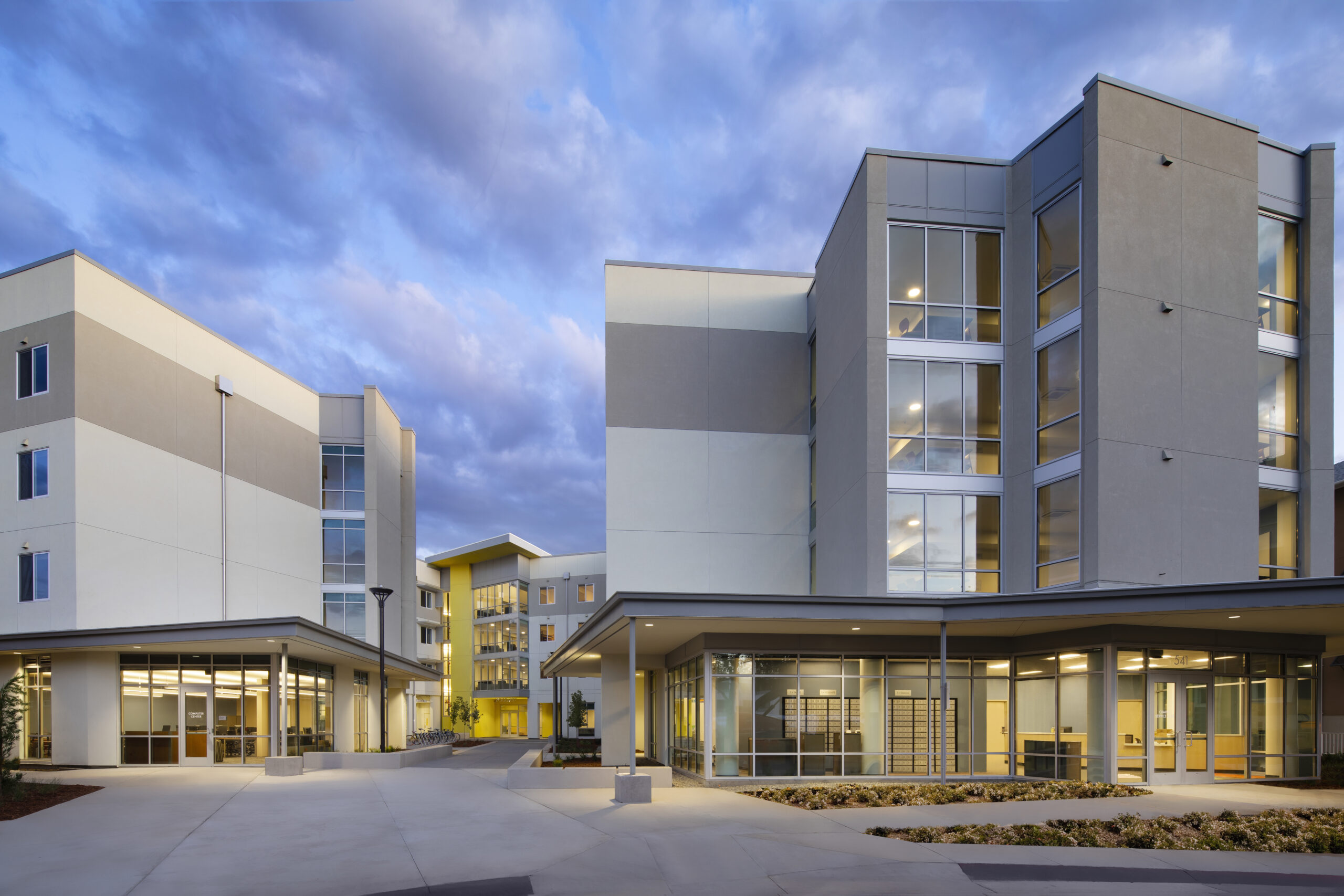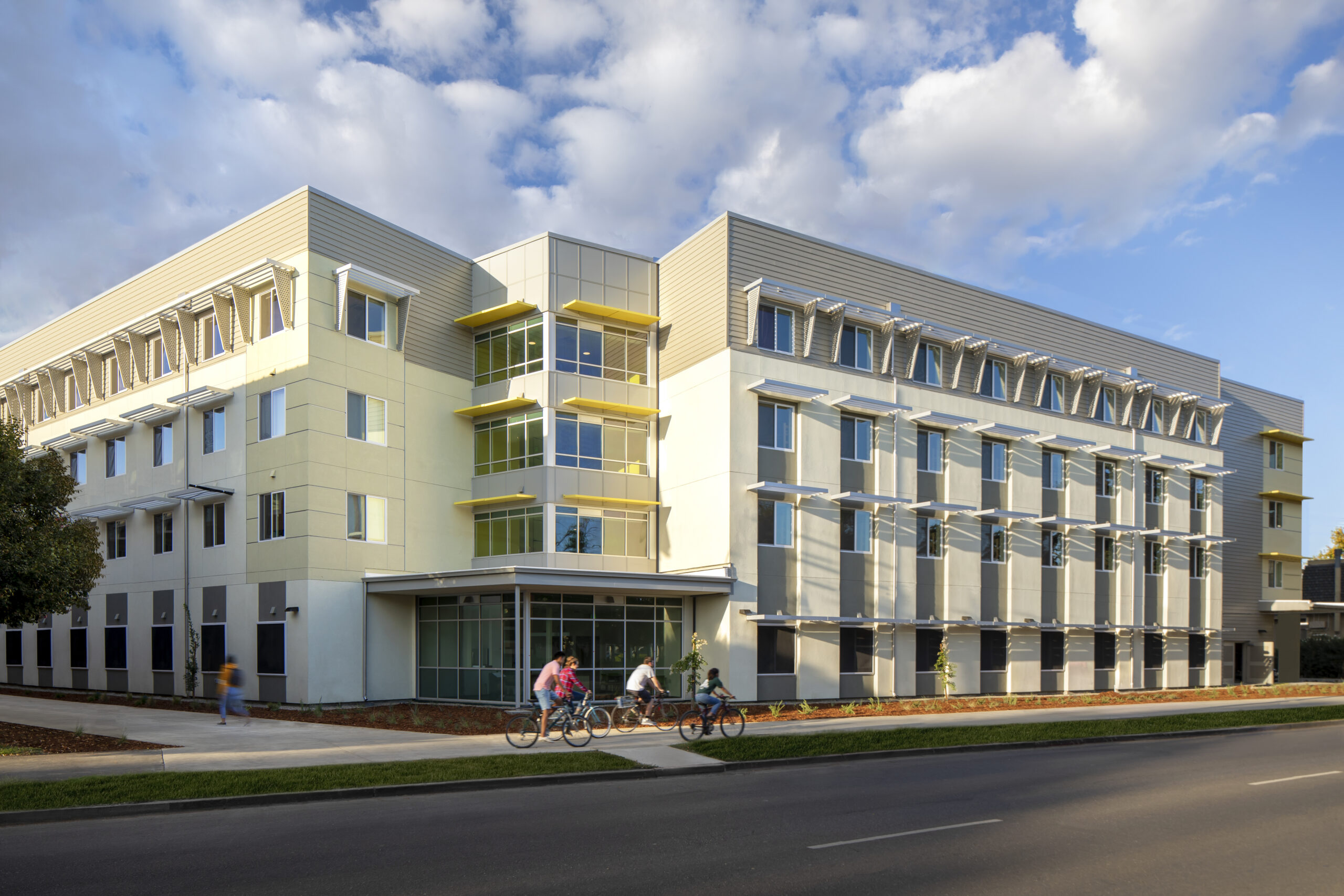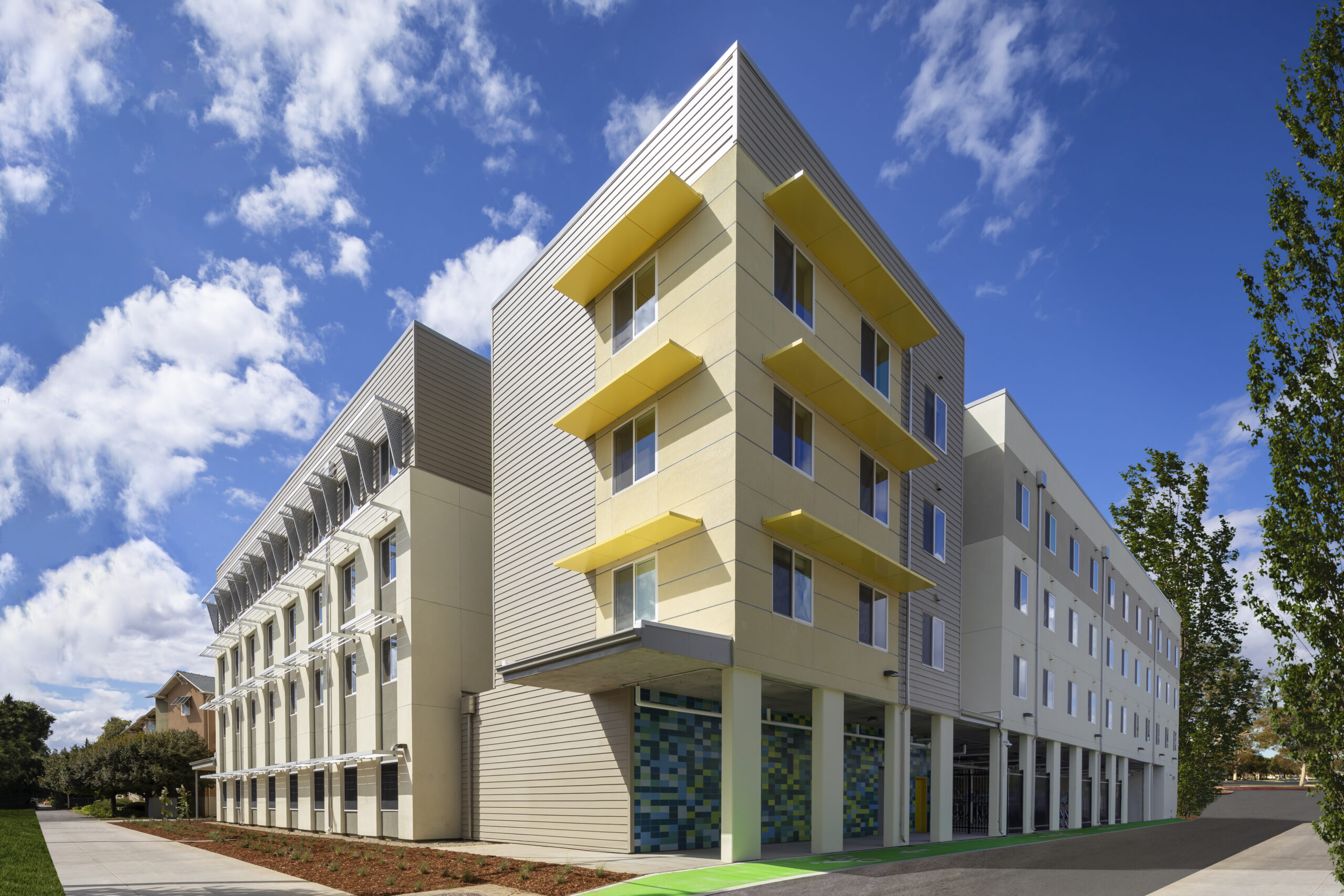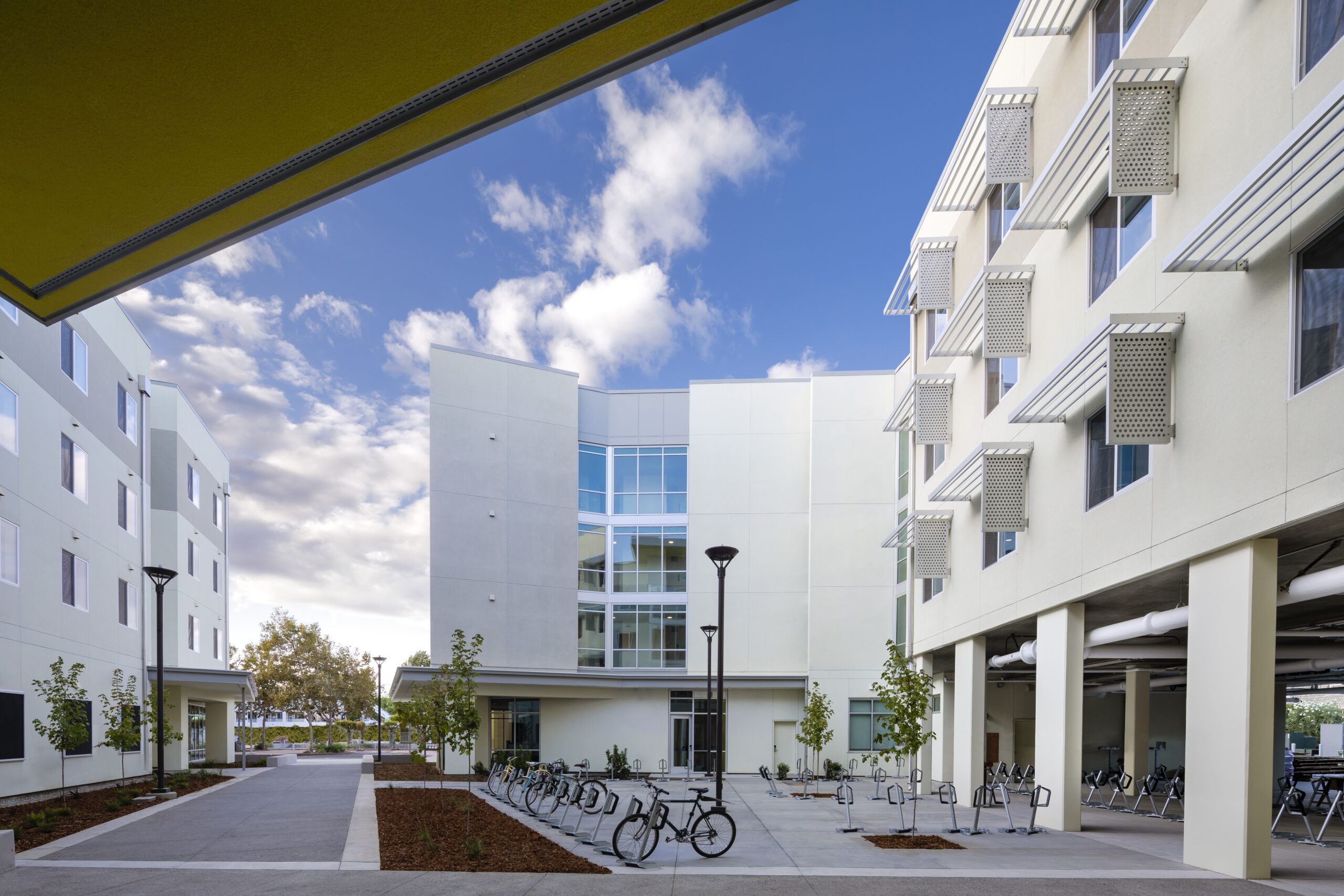
The Yosemite Hall Student Housing project is Mogavero Architects’ fourth housing project for UC Davis. It is the first of two phases of buildings that replaces two 50-year old residence halls in the Cuarto neighborhood, located just a few blocks northeast of the UC Campus. Replacing the former Webster Hall, the new building blends suites & dorm-style units to create more privacy while still maintaining ample resident social spaces.
The initial investigation involved a significant programming exercise to develop a new housing prototype for UC Davis, and an analysis comparing renovation to a demo and new build.

The project is intended to serve both first-time freshmen and returning students. Other student residences in the Cuarto Residential District are based on a suite-style model, differing from the more recent “cluster” housing on campus. The program led to a unit type that is in the middle of the spectrum between suites and traditional dorm style units, providing more privacy, while emphasizing the social interaction common to the traditional dorms. Yosemite, replacing the former Webster Hall, is a 373-bed student housing project that is comprised of 7 floor communities in a single 4-story building. The building massing recognizes the desire lines from the project toward the “food path” to the Dining Commons and the connection to the Cuarto Quad to the northwest.

The path to the center of campus (SE) is past the bike parking, protected under floors above and under the watchful architectural eyes of the laundry room. High activity rooms at the entries emphasize the dynamic quality of entry to the courtyard. The building block of the residential floor plans is a unit of two double rooms sharing a compartmentalized bathroom. It is possible to have the bedroom connected to the hall via the hold-open entry door. Five lounges open to the hall act as “living rooms” to encourage human interaction with spaces for studying, lounging and socializing.
The transparency of ground floor common spaces and the stacks of multiple lounges form transparent shifting volumes, untethered from the geometric ordered restrictions of the stacked bedroom units. These shifting crystals emphasize the relative importance of the common spaces and give a dynamic life to the courtyard.

